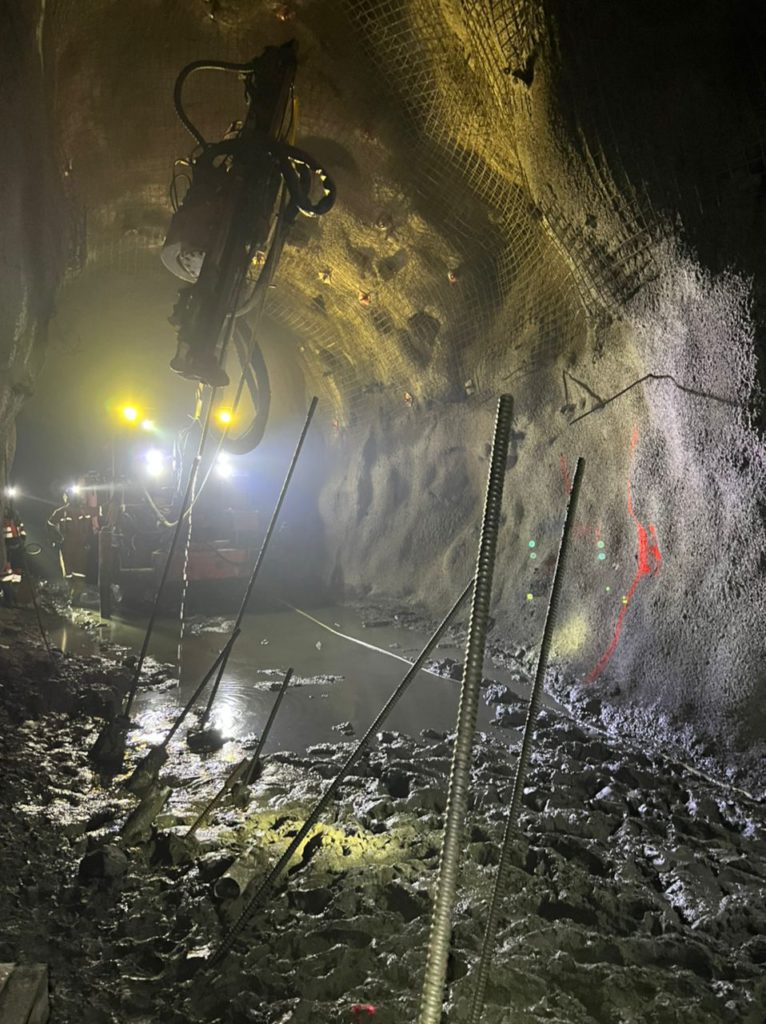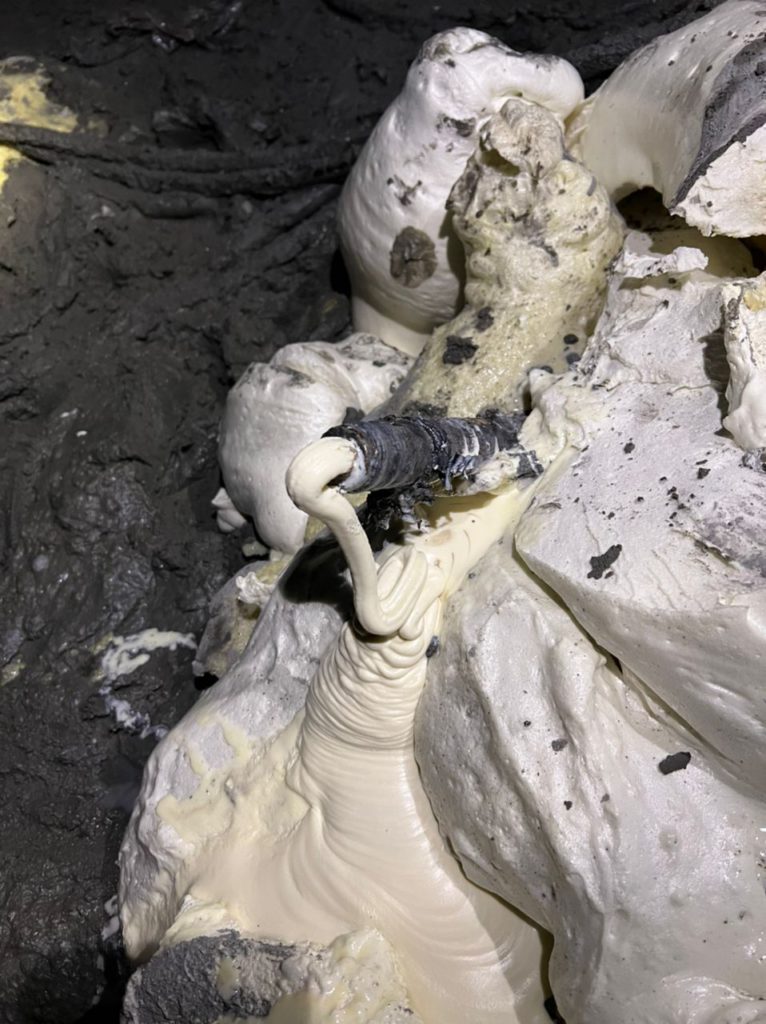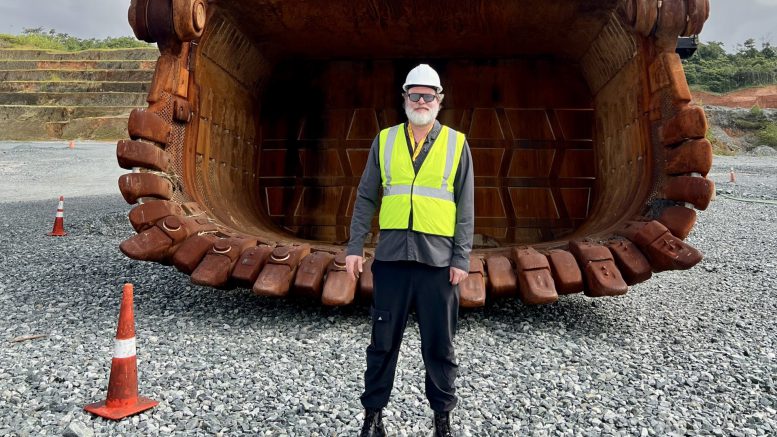Pillar fortification with resin injection in the sub-level caving process
The use of pumpable resins in mining operations has become increasingly versatile owing to their ability to consolidate grounds and prevent accidents in unstable geological conditions. In this case study, we describe how resin was used for the fortification of a pillar that facilitated the sub-level caving of a mineral block located next to a collapsed area spanning over several levels.
The first option, which was discarded because of its lack of safety, consisted of mining the block over its entire length and width without any treatment. Although this option would allow the extraction of the entire block, it presented the risk of completely losing the block if the collapsed zone connected to the mining area during the sub-level caving. Given the presence of a massive collapsed zone, this risk was even higher. Another option was to leave a natural pillar between the collapsed zone and the mining area, which would significantly reduce the size of the block to be mined and result in the loss of valuable minerals. This was primarily because of the required thickness of the natural pillar, as the collapsed area extended over several levels. However, this option, although safer, offered reduced benefits without sufficiently reducing the risk.
This option did not provide sufficient guarantees of success considering the risks involved with the natural pillar’s resistance, and the benefits would be limited.
Instead, Weber Mining proposed fortifying a pillar between the block to be mined and the collapsed area. This would create a consolidated barrier, enabling the safe extraction of the remaining block.
To achieve this, a drilling template was made from the upper gallery to the block to be mined, allowing the resin to cover the entire surface of the block. The drilling template consisted of injection lines, located five metres apart, with each line having five boreholes of various depths.
Given the changing ground, mixed between different types of rock, and the collapsed zone, this distribution is crucial to ensure the ground is homogenously injected. During the injection into each borehole, the resin migrates into the ground’s cracks. The injection stops once the pump’s pressure increases, indicating ground saturation. This methodology, with distribution throughout the block, allowed for consolidation and adaptation to the needs of the ground. Between one borehole and another, there was up to a 30% difference in consumption, owing to the presence of significant cracks in certain parts of the block. To achieve the above, it was also necessary to define the type of resin to use according to the type of ground, the void percentage, the distance over which it will be injected, the desired consolidation perimeter, and the injection equipment. With these parameters, we decided to use a resin with an expansion of three times its initial size and a curing time of four minutes.

Given the collapsed area and a high void percentage, the resin’s expansion allowed the area to be consolidated with a smaller amount of resin, which ultimately expedited the injection process and logistics, while still retaining excellent compression resistance. The reaction time of the resin, in conjunction with the injection equipment used, ensured that the resin was focused solely on the pillar’s area, and not beyond it. If the resin had migrated farther, it would have resulted in an unnecessary increase in cost and time.

Covering the area with strategically distributed injection points facilitated the precision of the consolidation work. As another parameter, we chose to start the injection with the deepest boreholes to begin saturating the ground from the bottom of the pillar and generate an ascending injection with the other boreholes. This ultimately created a lower limit from where the resin can migrate, helping the subsequent injection to stay localized on the pillar.
It is important to note that the compressibility of the resin and its adherence to the ground are crucial to ensure the block’s cohesion. During the sub-level caving process, the ground is under a lot of stress. The flexibility of the resin allows to maintain the ground’s cohesion during these times and prevent the pillar’s fortification from breaking.
Starting with a complex situation, where the most intuitive solution might have been for the mine to leave a natural mineral pillar between the collapsed terrain and the block to be mined, we were able to take all the available information, adapt our injection parameters, ensure the consolidation of a pillar with resin, and optimize the sub-level caving process. 
Anthony Ferrenbach is the general manager at Weber Mining Mexico.





Comments